What happens when you tear up years of AI policy and start from scratch? Companies like OpenAI had to pause major model releases under Biden’s safety requirements, but that’s about to change. Trump just announced his AI Action Plan through the new AI.gov website, marking the first time a White House has fully rescinded a prior AI executive order and replaced it with a new three-pillar framework. The changes are dramatic, from blocking federal funds to states with strict AI laws like California’s 18 regulations to streamlining data-center permitting for nuclear power. The tech industry is already reacting, and the responses tell us a lot about what’s coming next. Here’s how two and a half years of AI guardrails vanished overnight.

The Great AI Policy Wipeout
On January 20, 2025, Trump fully terminated Biden’s Executive Order 14110, wiping out mandatory safety tests for AI systems using high compute power. Companies that had spent months building compliance systems, hiring safety officers, and restructuring their AI development processes suddenly found themselves operating in a regulatory vacuum. What does this mean for the future of AI in America? We’re about to witness the most dramatic policy reversal in modern tech history.
Biden’s Executive Order 14110 was comprehensive in ways most people never realized. It required companies developing powerful AI systems to share safety test results with the government before releasing their models. Any AI system that used more than 10^26 FLOPs during training had to undergo mandatory safety evaluations. The order established watermarking requirements for AI-generated content, so people could identify when they were looking at artificial creations rather than human work. It also included provisions about AI bias, requiring companies to test their systems for discriminatory outcomes across different demographic groups.
The order went further than safety measures. Federal agencies were directed to use AI responsibly in their own operations, with specific guidelines about transparency and accountability. This framework represented what many considered a measured approach to AI regulation – allowing innovation while establishing guardrails. But it also foreshadowed what Trump would later call an onerous regulatory regime that threatened American competitiveness.

Trump’s team labeled this entire framework as “woke AI.” He called it “woke AI” and argued it imposed “crazy rules” that slowed America’s race against China. The criticism centered on what they saw as excessive focus on bias testing, social equity considerations, and overly cautious safety requirements. The previous administration’s approach emphasized making sure AI systems worked fairly for all groups of people, even if that meant slower development or additional testing phases. The new administration views these requirements as obstacles to American competitiveness, arguing that while other countries race ahead with AI development, America was getting bogged down in social considerations.
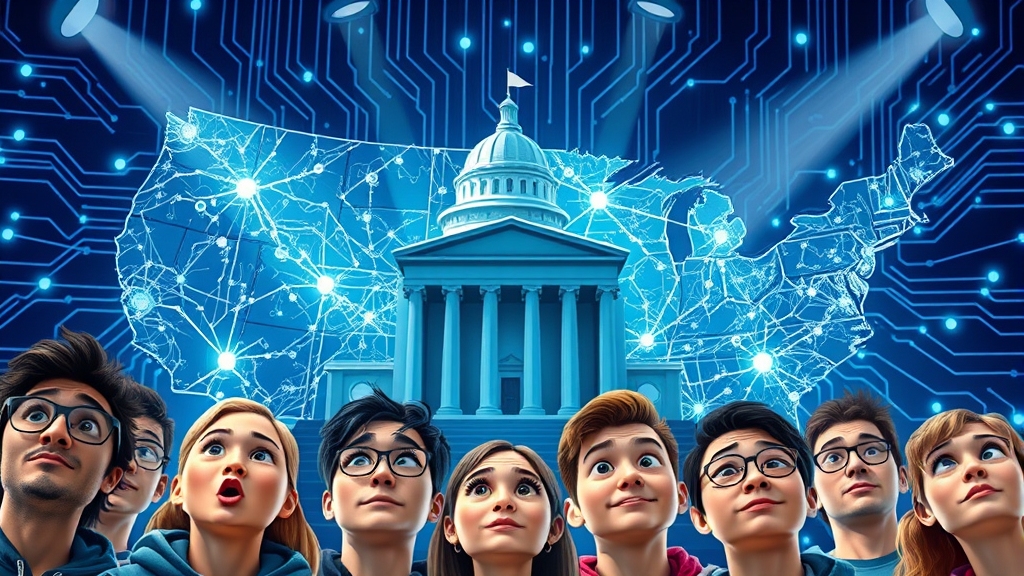
AI companies reacted with a mixture of relief and uncertainty. Some had privately complained about the compliance costs and delays associated with the previous framework. Others had invested heavily in safety infrastructure and weren’t sure what to do with those resources. Anthropic, known for their focus on AI safety, actually supported aspects of the policy change, particularly applauding the focus on infrastructure buildout that aligned with their March OSTP submission recommendations. Google, Microsoft, and OpenAI had to quickly reassess their development timelines and resource allocation. The immediate question became: do we maintain our safety testing procedures voluntarily, or do we accelerate development now that the requirements are gone?
Trump replaced the old system with three concrete policy changes that signal a completely different philosophy. The first establishes AI.gov as America’s centralized hub for AI policy and international coordination. The second blocks federal funding for states with burdensome AI regulations, specifically targeting places like California. The third tightens export controls on advanced chips while ensuring domestic companies have the resources they need to compete globally.
The timing of this announcement reveals strategic thinking about AI policy. Making this one of his first major moves sends a clear message to the tech industry, international partners, and competitors like China. It signals that AI development is now a top national priority, not just another technology sector. The administration recognizes that AI capabilities are developing so rapidly that traditional policy-making timelines simply don’t work. While previous approaches tried to establish comprehensive frameworks before the technology matured, this approach bets on speed and market-driven solutions.
The language differences between old and new policies tell us everything about this philosophical shift. Biden’s order used terms like “responsible AI development,” “equitable outcomes,” and “risk mitigation.” Trump’s documents emphasize “American AI dominance,” “winning the global race,” and “unleashing innovation.” Where the previous framework talked about balancing benefits with potential harms, the new approach assumes that American leadership in AI is itself the primary safety mechanism – if we don’t lead, someone else will, and they might not share our values.
For AI developers, researchers, and companies, these changes create immediate practical challenges. Teams that built entire departments around AI safety compliance suddenly need to figure out what to do with those resources. Startup companies that struggled with compliance costs might find it easier to launch AI products, but they also lose the clear guidelines that helped them understand what was expected. Research institutions that received federal funding for AI safety work face uncertainty about future support.
The “woke AI” framing matters because it connects AI policy to broader cultural and political debates. By positioning the previous approach as ideologically driven rather than technically necessary, the new administration is arguing that safety concerns were being used to slow down American competitiveness. This framing suggests that focusing on bias, fairness, and social impact represents a luxury America can’t afford while competing against countries that don’t share these concerns.
What we’re witnessing isn’t just a change in regulatory approach – it’s a fundamental reimagining of America’s role in the global AI race. The previous framework treated AI as a powerful technology that needed careful management as it developed. The new approach treats AI development as a matter of national survival, where speed and capability matter more than perfect safety measures. This policy reversal creates both opportunities and risks that we’re only beginning to understand. But to really grasp what this means, you need to see how the administration is communicating these changes to the world.
Inside AI.gov – America’s New Digital Command Center
The new AI.gov website serves as the digital face of this policy revolution. When you visit the site, the first thing you notice is how different this looks from any government website you’ve ever seen. The loading animation alone tells you something has changed. Most government sites feel like they were built in 2005 and never updated. This one was built using WebFlow, a platform that lets you create visually appealing websites without heavy coding. The result? A site that looks more like it came from a Silicon Valley startup than a federal agency. This design choice signals that this administration sees AI as a competitive arena where presentation matters as much as policy.

The homepage greets you with sleek animations and a modern interface that feels responsive and fast. Government websites usually prioritize information density over user experience. AI.gov flips that approach completely. The design emphasizes visual storytelling, with interactive elements that make complex policy concepts accessible to regular people. You can navigate through different sections smoothly, and the site responds to your clicks with satisfying micro-animations. This isn’t just about looking good – it’s about communicating that America’s AI strategy is as cutting-edge as the technology itself.

The site organizes everything around three core pillars that represent a strategic shift in how America approaches AI development. First, accelerating innovation through reduced regulatory barriers and increased private sector collaboration. Second, building the physical and digital infrastructure needed to support advanced AI systems at scale. Third, leading international diplomacy and security efforts to ensure American values shape global AI development. Each pillar gets its own section with detailed explanations, but the language used throughout reveals something important about the mindset driving these policies.
Look at the specific phrases scattered throughout the site. You’ll find language about “winning the race” and achieving “global dominance” in AI development. These aren’t accidental word choices. Traditional government communications typically use measured language about “leadership” or “competitiveness.” AI.gov uses the vocabulary of warfare and competition. The site frames AI development as a zero-sum game where America must not just participate but dominate completely. This language choice reflects a fundamental shift from viewing AI as a technology that needs careful management to seeing it as a weapon in an economic and technological war.
The interactive elements throughout the site make complex policy accessible in ways that traditional government documents never could. You can click through different scenarios to see how policies might affect various industries. Data visualizations show America’s current position in global AI metrics compared to competitors like China. These aren’t just pretty graphics – they’re tools designed to help visitors understand why the policy changes matter and what’s at stake if America doesn’t move quickly. The site essentially gamifies policy understanding, making it easier for people to grasp abstract concepts about technological competition.
Who actually built this site reveals something important about the influence shaping these policies. While the site was built on WebFlow, the content strategy and messaging clearly shows tech industry fingerprints. The tone, the focus on user experience, and the emphasis on speed and innovation all reflect Silicon Valley thinking rather than traditional government communication strategies. This suggests that private sector voices had significant input in how the administration presents its AI strategy to the public. The polished presentation isn’t just about good design – it’s about adopting private sector approaches to public communication.

When you compare AI.gov to similar initiatives from other countries, America’s approach stands out for its aggressive positioning. China’s AI governance sites focus on coordination and planning. European AI policy sites emphasize safety and ethics. America’s site reads like a battle plan for technological supremacy. The design choices reinforce this messaging – everything from the color scheme to the navigation structure communicates urgency and competitiveness. The site positions America not as one player among many in global AI development, but as the country that will determine the rules everyone else follows.
Strategic messaging appears in every section of the site, from hero text that emphasizes American technological superiority to call-to-action buttons that encourage private sector engagement. The site doesn’t just inform visitors about policy – it recruits them to support the administration’s AI agenda. Business leaders find sections specifically designed to show them how policy changes will benefit their operations. Researchers can access information about new funding opportunities. International partners can learn about collaboration frameworks. Each audience gets targeted messaging designed to encourage active participation rather than passive consumption of information.
AI.gov represents something new in government communication – a site designed not just to inform the public about policy, but to recruit allies for an economic and technological war. The sleek design, competitive language, and strategic messaging all serve this recruitment function. This isn’t just a government website – it’s a digital command center for America’s campaign to dominate global AI development. But behind all the polished presentation and ambitious rhetoric lies a fundamental question about what this dominance actually means in practice.
The Innovation Acceleration Gamble
The AI Action Plan states that America must have “the most powerful AI systems in the world.” What does this actually mean when you break it down? It’s not just about having the biggest computers or the most advanced algorithms. This goal requires fundamental changes to how America develops, tests, and deploys AI technology. The plan assumes that raw capability matters more than careful development processes. If your AI system can solve problems faster or handle more complex tasks than competing systems, you win. This approach treats AI development like a space race where being first matters more than being perfect.

The plan uses specific mechanisms to remove regulatory barriers that slow down AI development. The most controversial approach involves withholding federal AI funding from states with regulations the federal government considers too restrictive. This creates direct financial pressure on states to align their AI policies with federal priorities. States that maintain strict AI safety requirements risk losing federal research funding, infrastructure investments, and other resources that support their tech industries. This mechanism essentially forces states to choose between their own safety standards and federal support for AI development.
California faces the most direct targeting under this new approach. The state has enacted 18 AI-related laws covering everything from deepfakes to digital replicas to election-related content. Many experts consider these regulations reasonable protections for consumers and democratic processes. California’s laws criminalize creating non-consensual deepfakes, require social media platforms to establish reporting tools for users, and protect individuals from unauthorized use of their digital replicas. The federal plan views these protections as obstacles to innovation that could handicap American companies competing against less regulated international competitors.
The plan includes a request for businesses to report regulations that hinder their AI innovation efforts. This crowdsourced deregulation approach could lead to systematic dismantling of safety measures across multiple levels of government. Companies operating under various local, state, and federal requirements would essentially become the arbiters of which regulations serve legitimate purposes and which ones just slow down development. This approach assumes that private sector efficiency concerns align with public safety interests. But what happens when a regulation that protects consumers also increases compliance costs for businesses?
The economic argument driving this deregulation approach centers on competition with China. If American companies spend months conducting safety tests and compliance reviews while Chinese companies deploy AI systems immediately, America could lose its technological advantage permanently. This logic assumes that regulatory delays represent pure waste rather than necessary safeguards. The plan suggests that regulatory caution could cost America its competitive position in AI development, potentially leading to economic and national security consequences that outweigh the risks of moving too fast with AI deployment.
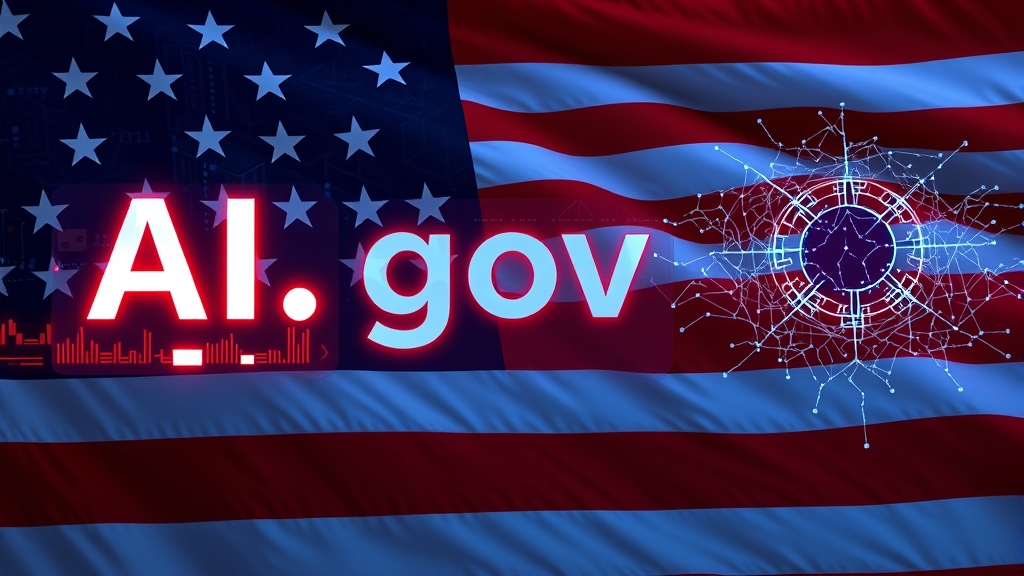
Workforce implications create another layer of complexity in this acceleration strategy. The plan promises that AI will create jobs by complementing human work rather than replacing it. Infrastructure buildout for AI development will create temporary high-paying construction and technical jobs. However, many economists expect AI capabilities to automate significant portions of current employment across multiple industries. The gap between promised job creation and potential job displacement raises questions about whether faster AI development actually benefits American workers or primarily benefits AI companies and their investors.
Specific industries stand to benefit most from this regulatory rollback. Autonomous vehicle development could accelerate if safety testing requirements become less stringent. Medical AI applications might reach patients faster without extensive clinical trial requirements. Financial services could deploy AI systems for lending and trading without lengthy approval processes. Energy companies developing AI-optimized power systems could avoid environmental review delays. Each of these sectors faces different risk profiles, where faster deployment could provide significant benefits but also create new categories of potential harm.
This policy shift reveals a fundamental change in how America balances innovation against risk. Traditional regulatory approaches assume that preventing harm justifies slower development timelines. The new approach assumes that losing technological leadership represents a greater risk than moving too quickly with new technologies. This philosophical change extends beyond AI policy to broader questions about how America manages technological development in an era of international competition.
The workforce development aspects of the plan focus on integrating AI skills into existing education and training programs. Career and technical education programs would incorporate AI literacy. Workforce training initiatives would help displaced workers transition to AI-adjacent roles. Apprenticeship programs would create pathways for workers to develop skills that complement AI capabilities rather than compete with them. These initiatives assume that education and training can keep pace with rapid technological change.
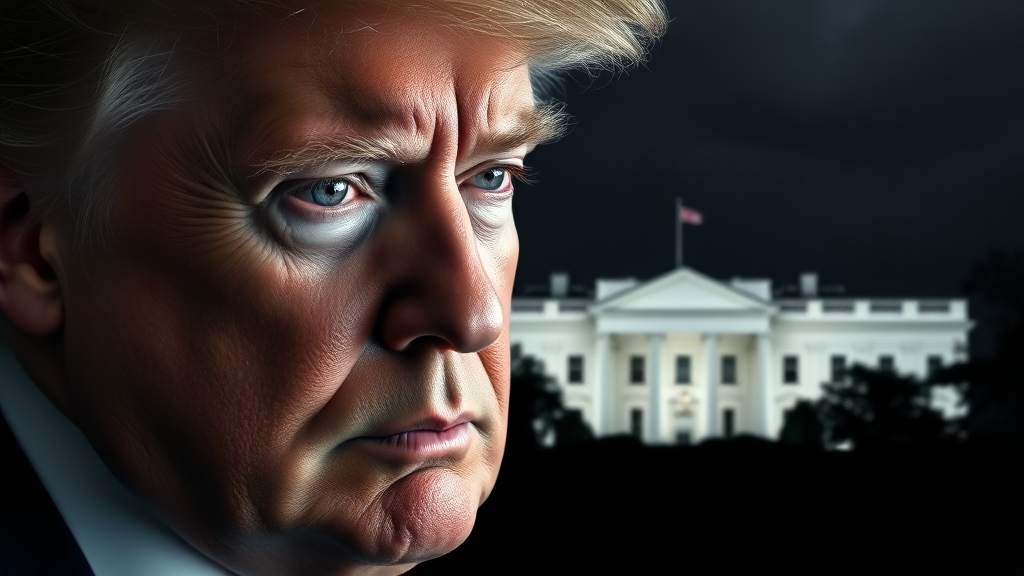
What we’re seeing isn’t just about removing specific regulations or streamlining approval processes. This represents a fundamental shift in how America approaches technological risk management. Instead of trying to prevent potential problems before they occur, this approach bets on American innovation capabilities to solve problems as they emerge. The question isn’t whether this strategy will eliminate all risks from AI development. The question is whether the benefits of faster innovation outweigh the costs of dealing with problems after they occur. But this entire acceleration strategy exists because of one overwhelming reality that’s driving every decision coming out of Washington.
The China Factor – Why Speed Trumps Safety
China’s rapid advancement in open-source AI models represents the strategic challenge reshaping American policy. While this might sound like a technical detail, it represents a fundamental shift in the global AI landscape. Open-source models don’t require users to pay licensing fees or follow the restrictions that companies like OpenAI place on their systems. When Chinese companies release powerful AI models for free, they’re essentially giving away technology that American companies are trying to monetize. This creates a competitive dynamic where American innovation has to compete against free alternatives that might be just as capable.
The current global AI leaderboard tells an interesting story about American dominance and emerging challenges. Eight of the top ten AI models come from US companies like OpenAI, Google, and Anthropic. These models lead in overall intelligence and capability across most tasks. But when you look specifically at open-weight models – the ones anyone can download and modify – the picture changes dramatically. Chinese developers are gaining significant ground in this category, creating models that perform surprisingly well considering the resources available to their creators. This trend matters because open-source models often drive innovation faster than closed systems, allowing researchers and startups to build on existing work rather than starting from scratch.
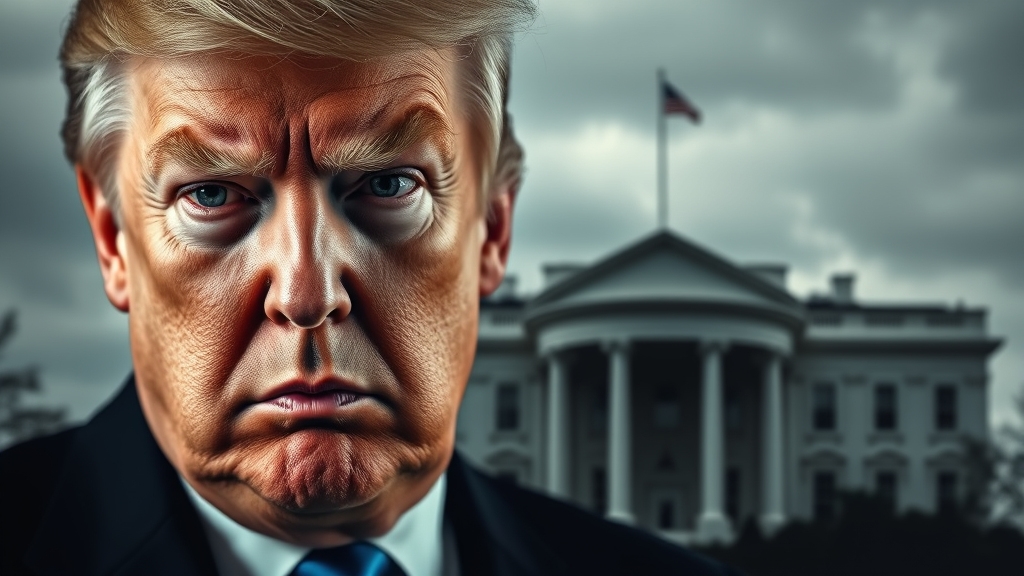
DeepSeek R1 perfectly illustrates the strategic implications of this shift. This Chinese AI model temporarily shook US market confidence and forced American policymakers to recalculate their assumptions about technological leadership. DeepSeek R1 demonstrated capabilities that many experts didn’t expect from a Chinese model, particularly given the export restrictions on advanced AI chips. The model’s performance suggested that Chinese developers had found ways to achieve impressive results despite limited access to the most advanced hardware. This development forced uncomfortable questions about whether American advantages in AI development were as secure as many had assumed.
Export controls create a fascinating dilemma that highlights the complexity of technological competition. The US restricts China’s access to advanced AI chips, hoping to slow down Chinese AI development. But these restrictions have pushed Chinese companies to innovate in unexpected ways. When you can’t access the best hardware, you have to find more efficient ways to use the hardware you have. Chinese developers have created novel chip designs and alternative approaches that sometimes produce results that surpass what US companies achieve with better hardware. The restrictions meant to handicap Chinese AI development have actually spurred innovation that makes Chinese companies more competitive in certain areas.
The immigration paradox reveals another layer of complexity in America’s AI strategy. The US needs global talent to maintain its technological leadership. Over half of postgraduate students in deep scientific research fields come from around the world and work within the US. These international researchers and engineers often drive the innovations that keep American AI companies ahead of their competitors. But current immigration policies make it harder for skilled workers to contribute to American AI development. Visa restrictions, lengthy approval processes, and uncertainty about long-term residency status all discourage talented individuals from choosing America for their careers.
TSMC’s dominance in semiconductor production creates a manufacturing dependency that affects every aspect of AI competition. This Taiwan-based company holds a substantial market share in advanced chip manufacturing, with even greater dominance in the most advanced chips that power AI applications. American AI companies depend on TSMC for the hardware that makes their models possible. But Taiwan’s complex relationship with China introduces geopolitical vulnerabilities that could affect America’s AI capabilities. If political tensions disrupted TSMC’s operations or created supply chain problems, American AI development could face serious obstacles regardless of policy changes or regulatory frameworks.

AI development has become a form of economic warfare with real national security implications. This isn’t just about which country has the best AI models or the most advanced technology. The competition extends to determining which country’s values and systems will shape how AI technology gets developed and deployed worldwide. American AI systems reflect American approaches to privacy, free speech, and individual rights. Chinese AI systems reflect different cultural and political values. The country that dominates AI development will largely determine how these powerful technologies affect societies around the world.
The timeline pressure adds urgency to every policy decision related to AI development. The window for maintaining US AI dominance may be narrower than many people realize. Technological advantages in AI can disappear quickly when breakthrough research gets published and shared globally. A single innovation in model architecture or training techniques can shift competitive balances overnight. American policymakers face pressure to accelerate AI development before competitors achieve capabilities that are difficult to match.
Chinese AI development approaches differ from US methods in ways that reveal both opportunities and challenges. Chinese companies often embrace open-source development strategies that allow rapid iteration and community contribution. They’re more willing to release models publicly, even when those models could benefit competitors. Chinese AI research tends to focus on practical applications and commercial deployment rather than theoretical research or safety testing. These different approaches create advantages in some areas while potentially creating vulnerabilities in others.
What does this competition actually mean for the future? The China factor in AI development isn’t just about having better technology or more advanced capabilities. It’s about determining which country’s values and systems will shape the AI-powered future that’s emerging around us. The country that dominates AI development will largely determine how these technologies affect everything from economic systems to political structures to social relationships. But all of these strategic considerations depend on solving a more fundamental challenge that most people don’t even realize exists.
The Energy Crisis Nobody’s Talking About
America’s entire AI strategy faces a fundamental constraint that most people don’t realize: we simply don’t have enough electricity. Picture this scenario: you’ve built the most advanced AI system in the world, but you can’t run it because your local power grid can’t handle the demand. That’s the reality facing American AI companies right now. While everyone focuses on chips and code, the real bottleneck is something much more basic – we don’t generate enough power to support the AI future we’re trying to build.
The numbers tell a stark story about America’s energy stagnation. Since 1999, US energy production has barely grown while China has dramatically expanded its grid capacity. China has been building power plants, upgrading transmission lines, and investing in energy infrastructure at a pace that makes American efforts look sluggish. What does this mean for AI competition? It means Chinese companies can access cheap, abundant power for their AI operations while American companies face capacity constraints and rising energy costs. This isn’t just about having enough electricity – it’s about having a competitive advantage in the global AI race.
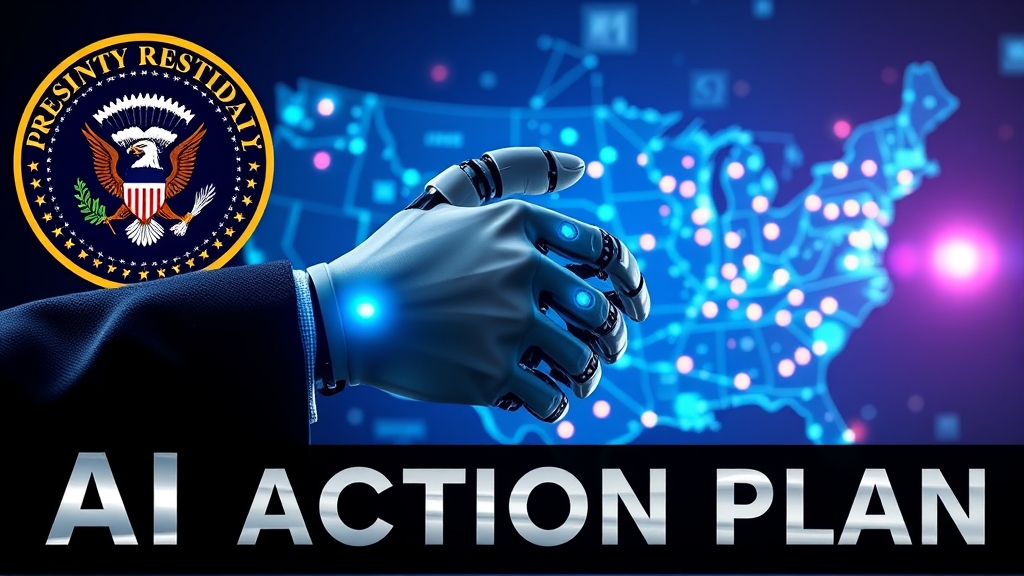
Microsoft’s response to this energy crisis shows just how desperate the situation has become. The company is building its own nuclear power sources specifically to run their AI operations. Think about that for a moment. One of the world’s largest technology companies has decided that the existing power grid is so inadequate that they need to become their own utility company. Microsoft isn’t just buying more electricity from existing sources – they’re creating entirely new power generation capacity because the current system can’t meet their needs. This move illustrates the scale of the energy challenge better than any policy document could.
Let’s break down the specific energy demands that make AI development so power-hungry. Training a large language model like GPT-4 requires massive amounts of electricity running thousands of specialized chips for weeks or months. But training is just the beginning. Once these models are deployed, they need constant power to respond to user requests. Every time someone asks ChatGPT a question or generates an image with AI, that interaction consumes electricity. Multiply that by millions of users making billions of requests, and you start to understand why AI companies are scrambling for power access. A single large AI data center can consume as much electricity as a small city.
The AI Action Plan embraces nuclear energy as a necessary solution, including both traditional fission and emerging fusion technologies. This represents a major shift in American energy policy. Nuclear power provides the consistent, high-output electricity that AI operations require. Unlike solar or wind power, nuclear plants generate electricity around the clock regardless of weather conditions. But here’s the challenge: nuclear energy faces significant political opposition and regulatory hurdles that slow down deployment. The plan recognizes this reality and aims to streamline nuclear development processes, but changing decades of nuclear policy won’t happen overnight.
Grid stability creates another layer of complexity when AI workloads combine with existing electricity demands. Imagine a hot summer day when everyone’s running air conditioning while AI data centers are processing peak user requests. The grid has to handle both the predictable demand from cooling systems and the unpredictable spikes from AI operations. Traditional power grids weren’t designed for these sudden, massive power draws that AI systems create. When an AI company decides to train a new model, they might suddenly need the equivalent power of a small town for several weeks. This kind of demand volatility creates serious challenges for grid operators trying to maintain stable electricity supply.

Permitting and regulatory barriers have prevented rapid energy infrastructure development for decades. Building a new power plant requires navigating complex approval processes that can take years or even decades to complete. Environmental reviews, safety assessments, and regulatory compliance all add time to energy projects. The AI Action Plan aims to streamline these processes, recognizing that traditional timelines for energy infrastructure don’t match the speed of AI development. But streamlining regulations means making trade-offs between thorough review processes and faster deployment.
Energy costs create real economic implications for AI competitiveness. Countries with cheaper electricity have natural advantages in AI development. If it costs significantly less to train and run AI models in other countries, American companies face pressure to move their operations overseas. This isn’t just about saving money – it’s about remaining competitive in a global market where energy costs directly affect your ability to develop and deploy AI systems.
Enhanced geothermal and small modular reactors represent innovative solutions that could provide the clean, scalable power AI development requires. Enhanced geothermal systems tap into underground heat sources that exist in many more locations than traditional geothermal plants. Small modular reactors offer nuclear power in smaller, more flexible packages that can be deployed closer to where electricity is needed. These technologies could revolutionize how we generate power for AI operations, but they’re still in development phases.
The plan emphasizes that “AI is the first digital service in modern life that challenges America to build vastly greater energy generation than it has today.” This recognition of energy as a fundamental constraint on AI development marks a significant shift in how policymakers think about technology infrastructure. Previous digital technologies like smartphones or social media platforms didn’t require massive new power generation capacity. AI is different. It demands so much electricity that it forces us to rethink our entire energy system.
Here’s the key insight: without solving the energy equation, all other AI policy initiatives become meaningless because the infrastructure simply can’t support the ambitions. You can remove regulatory barriers, streamline approval processes, and create competitive advantages, but if you don’t have enough electricity to power AI systems, none of those policies matter. The energy crisis isn’t a side issue in AI development – it’s a fundamental constraint that determines whether America’s AI strategy succeeds or fails. But even if we solve the power problem, America’s AI ambitions still depend on solving an even more complex challenge that threatens our technological independence.

The Semiconductor Dependency Trap
America’s entire AI dominance depends on chips manufactured in Taiwan by a single company. The Taiwan Semiconductor Manufacturing Corporation, or TSMC, produces the advanced processors that power every major AI system from ChatGPT to Claude. What does this mean for America’s AI ambitions? It means our technological future sits on an island 100 miles from mainland China, in a region where geopolitical tensions could disrupt everything overnight. This isn’t just a supply chain issue – it’s a fundamental vulnerability that could determine whether America wins or loses the AI race.
Morris Chang built TSMC into the world’s semiconductor manufacturing powerhouse through a strategy that seemed almost too simple to work. In the late 1980s, after a career at Texas Instruments, Chang moved to Taiwan with a radical idea. Instead of trying to compete with companies that designed and manufactured their own chips, he would focus exclusively on manufacturing chips for other companies. This foundry model allowed companies like Apple, Nvidia, and AMD to focus on chip design while TSMC handled the incredibly complex manufacturing process. Chang’s vision was that specialization would create advantages that integrated companies couldn’t match. Forty years later, that bet has paid off in ways that make catching up seem nearly impossible.
The statistics around TSMC’s market dominance tell a story that should worry anyone thinking about American technological independence. TSMC holds approximately 60% of the global semiconductor manufacturing market, but that number doesn’t capture the real problem. When you look specifically at the most advanced chips that power AI systems, TSMC’s dominance jumps to over 80%. These aren’t just any chips – they’re the cutting-edge processors that determine whether your AI model can process information quickly enough to be competitive. Every major AI breakthrough depends on chips that come from factories in Taiwan. This concentration of manufacturing capability in a single company creates a bottleneck that affects the entire global AI industry.
Intel’s attempts to compete in advanced manufacturing show just how difficult it is to challenge TSMC’s position. Intel has spent billions trying to build manufacturing capabilities that can match TSMC’s most advanced processes. The company has struggled with delays, technical challenges, and cost overruns that nearly bankrupted them. Intel’s manufacturing problems became so severe that they had to rely on TSMC to manufacture some of their own most important chips. Think about that – one of America’s most important technology companies couldn’t manufacture its own products and had to turn to the same Taiwanese company that manufactures chips for Intel’s competitors. This illustrates the enormous barriers to entry in advanced semiconductor manufacturing.
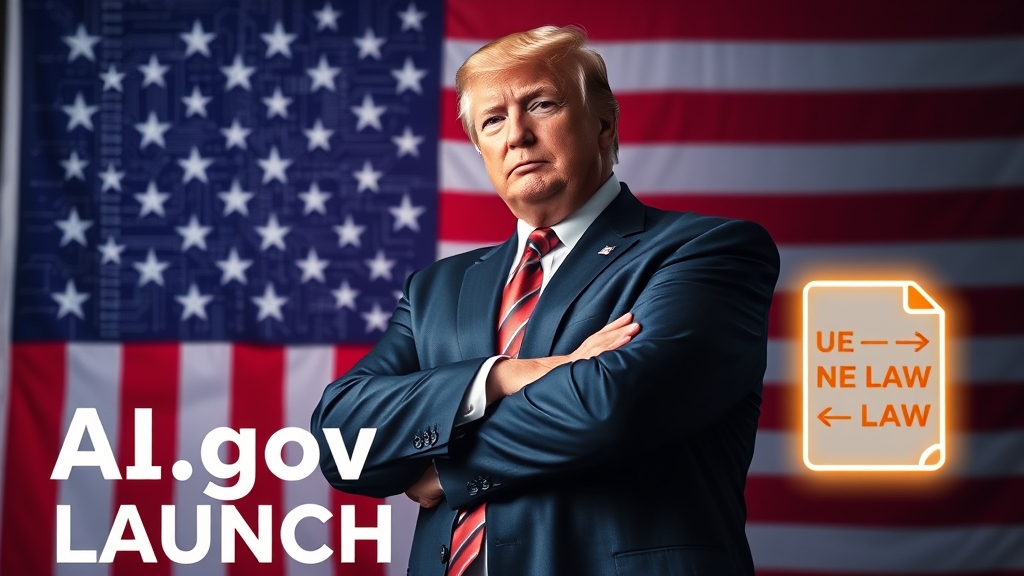
The geopolitical vulnerability this creates is staggering when you consider the political tensions surrounding Taiwan. The island sits in one of the world’s most contested regions, where military exercises and diplomatic disputes regularly escalate tensions. US AI development depends on infrastructure located in an area where conflict could disrupt operations immediately. What happens to American AI capabilities if political tensions between China and Taiwan affect TSMC’s operations? What happens if natural disasters, cyber attacks, or other disruptions affect chip production? America’s AI strategy assumes continued access to Taiwanese manufacturing, but that access depends on factors completely outside US control.
TSMC is investing $100 billion in Arizona facilities as part of efforts to reduce America’s manufacturing dependency. These facilities represent the largest foreign direct investment in American manufacturing history. But can these Arizona plants meaningfully reduce America’s vulnerability? The timeline tells us a lot about the challenge ahead. TSMC’s Arizona facilities are scheduled to begin production in the mid-2020s, but they’ll initially focus on older chip technologies rather than the most advanced processes that power AI systems. Even when fully operational, these facilities will represent only a small fraction of TSMC’s global manufacturing capacity.
The technical barriers to semiconductor manufacturing explain why TSMC’s advantages are so difficult to replicate. Advanced chip manufacturing requires 40 years of accumulated expertise in areas ranging from materials science to precision engineering. Manufacturing facilities cost tens of billions of dollars and require thousands of highly specialized workers who understand processes that can’t be learned from textbooks. Each generation of chips requires new manufacturing techniques that build on decades of previous innovations. When you’re trying to manufacture transistors that are smaller than viruses, every aspect of the process becomes incredibly complex.
The timeline reality means that even successful efforts to build US manufacturing capacity will take 5-10 years to become meaningful. Building a state-of-the-art semiconductor manufacturing facility requires over five years from planning to operational readiness, even with substantial financial investment. That assumes everything goes according to plan, which rarely happens with projects this complex. During these years, AI development will continue advancing rapidly, potentially creating new dependencies on even more advanced manufacturing processes that don’t exist in US facilities.
The economic implications affect everything from AI model training costs to national security planning. Training advanced AI models requires access to the latest chips, and chip shortages or price increases directly impact development costs. Companies that can’t access advanced chips fall behind competitors who can. This dependency also affects how America plans for national security scenarios. Military AI applications, intelligence analysis, and cybersecurity systems all depend on advanced chips manufactured in Taiwan.
America’s AI future hinges on solving a manufacturing problem that may be the most complex industrial challenge of our time. Advanced semiconductor manufacturing represents one of the most technically demanding industrial processes humans have ever developed. The combination of enormous capital requirements, decades-long expertise development, and incredibly complex technical processes makes this challenge unlike anything America has faced before. Success requires not just financial investment but also developing industrial capabilities that currently exist in only a few locations worldwide. But even if America solves its chip dependency, another challenge threatens to undermine the entire AI development process through legal restrictions that could hand competitors a decisive advantage.
The Copyright Conundrum That Could Kill Innovation
Training AI models on copyrighted content creates legal risks that could fundamentally handicap American AI development. Trump’s AI Action Plan addresses this challenge with characteristic directness, recognizing that current copyright frameworks create barriers that could hand competitive advantages to countries with more flexible approaches to intellectual property. American AI companies face potential lawsuits every time they train models on copyrighted content, while competitors in other countries might operate without these legal constraints. This isn’t just a theoretical problem – it’s already affecting how companies approach AI development and where they choose to conduct their research.
The fundamental tension lies in balancing two legitimate but competing interests. Content creators deserve protection for their work, and copyright laws exist to ensure artists, writers, journalists, and other creators can make a living from their intellectual property. But AI systems need vast amounts of data to learn effectively, and much of the world’s most valuable information exists in copyrighted form. Books, articles, songs, images, and videos represent humanity’s accumulated knowledge and creativity. Restricting AI access to this content could produce systems that are less capable, less accurate, and less useful. The question becomes: how do we protect creators while still allowing AI systems to benefit from human knowledge?
Copyright restrictions could create serious disadvantages for US AI development compared to Chinese companies operating under different legal frameworks. Chinese AI developers might have access to broader datasets because their legal system doesn’t enforce copyright restrictions as strictly as American courts do. This creates an uneven playing field where American companies spend time and money navigating complex legal requirements while their competitors train models on whatever data produces the best results. Chinese models like DeepSeek have already demonstrated impressive capabilities, and part of their success might stem from having fewer legal constraints on training data access. American companies face the choice between legal compliance and competitive capability.
Government-funded research data offers one potential solution that could provide US AI companies with competitive advantages. Federal agencies, universities, and research institutions produce enormous amounts of high-quality data using taxpayer funding. Making this data readily available to American AI companies would create a significant resource advantage over international competitors. This approach could include everything from scientific research datasets to government surveys and census information. American taxpayers have already funded the creation of valuable training data, so American companies should have privileged access to these resources as a competitive advantage in the global AI race.
Training AI systems to respect copyright while maintaining effectiveness presents significant technical challenges. AI models learn by identifying patterns across massive datasets, and restricting access to copyrighted content could limit their ability to understand important concepts and relationships. The technical complexity increases when you consider that AI systems need to recognize copyrighted material and avoid reproducing it in their outputs. This requires sophisticated filtering systems that can identify protected content without compromising the model’s core capabilities. The challenge becomes even more complex when you realize that ideas and concepts can’t be copyrighted, only specific expressions of those ideas.
Different countries’ approaches to copyright and AI training create competitive advantages and disadvantages in the global market. European copyright laws tend to be strict, potentially limiting how European AI companies can train their models. Asian countries might have more flexible approaches that allow broader data access. American companies face the challenge of complying with some of the world’s most complex copyright regulations while competing against companies that operate under more permissive legal frameworks. This international dimension means that copyright policy becomes a matter of national competitiveness, not just domestic intellectual property protection.
Synthetic data represents an alternative that could replace copyrighted content without legal complications. Instead of training on existing books, articles, or images, AI companies could generate artificial training data that serves the same educational purpose without infringing on anyone’s copyright. But the quality question remains crucial: can synthetic data replicate the richness and diversity of real human-created content? Early experiments suggest that synthetic data can work for specific applications, but it might not capture the full complexity of human knowledge and creativity. The challenge is creating synthetic data that’s diverse enough to train capable AI systems without losing the insights that come from learning from authentic human expressions.
Legal precedents and ongoing court cases will determine how this issue gets resolved in practice. Several major lawsuits are working their way through the court system, challenging whether AI training on copyrighted content constitutes fair use or copyright infringement. These cases will establish legal standards that affect how every AI company operates. The outcomes could range from broad permissions for AI training to strict restrictions that require licensing agreements for any copyrighted content. Publishers, artists, and AI companies are all watching these cases closely because the results will shape the entire industry’s approach to training data.
The copyright question represents more than just fairness to creators – it’s about whether America will allow legal complexity to hand competitive advantages to international rivals. If American AI companies spend years navigating copyright lawsuits while Chinese companies train models without these constraints, the competitive implications could be significant. The concern isn’t just about individual companies losing market share, but about America potentially ceding leadership in AI development because of legal barriers that other countries don’t face.
The solution requires finding a balance that protects legitimate creator interests while ensuring American AI companies can compete effectively in the global market. This might involve new licensing frameworks, expanded fair use definitions, or government-mediated solutions that compensate creators while allowing AI training. What’s clear is that the current uncertainty creates problems for everyone involved – creators don’t know how their work will be used, and AI companies don’t know what legal risks they face. Resolving this copyright conundrum could determine whether America maintains its AI leadership, but the industry response to these policy changes reveals some unexpected alliances forming around the administration’s aggressive approach.
Anthropic’s Surprising Alliance
Anthropic, the company everyone thinks of as the “safety-first” AI developer, actually supports most of Trump’s aggressive AI strategy. When the AI Action Plan was released, many expected Anthropic to push back against policies that prioritize speed over caution. Instead, they released a detailed response showing remarkable alignment with the administration’s goals. This isn’t just polite corporate diplomacy – Anthropic genuinely agrees with accelerating AI infrastructure development and strengthening federal adoption of AI systems. What does this tell us about the supposed conflict between AI safety and rapid development? Maybe that conflict isn’t as real as we thought.
Anthropic’s response reveals something fascinating about their priorities. They don’t just agree with the plan’s main goals – in several areas, they actually want stronger measures than the government proposed. The company supports accelerating AI infrastructure and federal adoption, which aligns perfectly with the administration’s push for faster development. But here’s where it gets interesting: Anthropic advocates for stricter export controls than what the plan includes. They’re also pushing for more comprehensive transparency requirements around AI development. This isn’t the response you’d expect from a company that’s supposedly focused only on slowing down AI progress for safety reasons.
The irony becomes clear when you look at specific policy areas where Anthropic takes stronger positions than the Trump administration. While the government talks about maintaining export controls on AI chips to China, Anthropic actively criticized recent decisions to loosen these restrictions. They opposed allowing exports of NVIDIA H20 chips to China, arguing that this would “squander an opportunity to extend American AI dominance.” Think about that – the company known for AI safety research is taking a harder line on technological competition with China than the administration that’s supposed to be aggressively pro-American. This suggests their safety concerns and competitive concerns might actually point in the same direction.
Anthropic’s influence on the final AI Action Plan becomes obvious when you compare their previous policy submissions to what ended up in the official documents. The company has been actively engaging with government agencies like the Office of Science and Technology Policy for months, submitting detailed recommendations about AI development priorities. Many of their suggestions appear directly in the final plan, particularly around streamlining data center and energy permitting processes. This isn’t coincidence – it’s evidence that Anthropic has been shaping AI policy from the beginning, helping craft an approach that balances their safety concerns with the need for American competitiveness.
Their stance on transparency requirements shows how industry self-regulation might evolve into government standards. Anthropic believes that basic AI development transparency requirements, including public reporting on safety testing and capability assessments, are essential for responsible development. They’ve already implemented voluntary safety frameworks that demonstrate how responsible development and innovation can work together. The company has activated what they call ASL3 protections to prevent misuse of their systems. These voluntary measures could become the template for government-mandated standards, creating a pathway where industry best practices become regulatory requirements.
Here’s where Anthropic’s position gets really interesting: they defend states’ rights while the federal government wants to override local laws. The company opposes proposals that would prevent states from enacting measures to protect their citizens from potential AI harms if the federal government fails to act. This stance puts them at odds with the administration’s preference for federal control over AI regulation. Anthropic argues that a ten-year moratorium on state AI laws represents too blunt an instrument for managing AI development risks. They’re essentially saying that states should maintain their ability to regulate AI even when federal policies take a hands-off approach.
Energy infrastructure represents another area where Anthropic pushes for stronger government action than the plan provides. The company has warned repeatedly about the risks of insufficient energy capacity for AI development. They argue that “without adequate domestic energy capacity, American AI development may be forced to relocate operations overseas, potentially exposing sensitive technology to foreign adversaries.” This isn’t just about business convenience – Anthropic frames energy policy as a national security issue. They want faster permitting for data centers and energy projects because they see infrastructure delays as threats to American AI leadership.
The company’s advocacy for strict chip export controls reveals how they think about technological competition with China. Anthropic strongly agrees with denying foreign adversaries access to advanced AI compute, calling it both a matter of geostrategic competition and national security. They were particularly concerned about recent government decisions to allow certain chip exports to China. From their perspective, maintaining technological advantages over Chinese AI development serves both competitive and safety purposes. If American companies lead in AI capabilities, they can ensure these powerful systems reflect American values and interests rather than authoritarian alternatives.
This alignment reveals something important about the current moment in AI development. The supposed conflict between safety and speed might be a false choice when the real competition is international rather than domestic. Anthropic and the Trump administration both recognize that slowing down American AI development doesn’t make the world safer if it just hands advantages to Chinese competitors who don’t share American values about AI safety and responsible use. This shared understanding creates space for policies that prioritize both American competitiveness and responsible development practices.
The key insight here changes how we think about AI policy going forward. The tension between AI safety advocates and aggressive development policies may be a false dichotomy because both sides want American AI leadership. They just disagree about the best methods for achieving that goal. Anthropic’s surprising alliance with Trump’s AI strategy suggests that safety and competitiveness might actually require many of the same policy approaches – faster infrastructure development, stronger export controls, and clearer regulatory frameworks. But achieving American AI leadership requires more than just domestic policy changes – it demands a comprehensive strategy for managing technology relationships with allies and adversaries around the world.
The Global AI Alliance Strategy
The AI Action Plan sets an ambitious goal that sounds almost too bold to be real: export America’s “full AI tech stack” to allies while completely denying it to adversaries. What does this actually mean? We’re talking about sharing everything from advanced AI hardware and cutting-edge models to specialized software, applications, and the technical standards that make it all work together. This isn’t just about selling products to friendly countries. This represents a comprehensive strategy to make allied nations dependent on American AI technology while ensuring that strategic rivals like China can’t access any of it. Think of it as creating an exclusive club where membership comes with access to the world’s most advanced AI capabilities.
The plan operates through a three-tier system that categorizes every country in the world based on national security risk assessments. Tier one includes America’s closest allies, who face almost no restrictions on accessing American AI technology. These countries can essentially access whatever they need to build their own AI capabilities using American foundations. Tier two covers most other nations, who encounter some limitations but can still access significant AI resources. Tier three targets adversarial nations with the strictest possible controls, effectively cutting them off from American AI advances. This system creates a global hierarchy where your relationship with America determines your access to the most important technology of our time.
But here’s the challenge that makes this strategy incredibly complex: AI capabilities can be reverse-engineered or developed independently by smart people anywhere in the world. Unlike nuclear technology, which requires rare materials and massive industrial infrastructure, AI development primarily needs talented researchers and computing power. If you restrict access to American AI models, other countries might just build their own versions that work almost as well. Chinese companies have already demonstrated this with models like DeepSeek R1, which achieved impressive capabilities despite export restrictions on advanced chips. The question becomes: can export controls actually prevent technological diffusion when the underlying science is publicly available?
Using AI technology as a diplomatic tool creates economic implications that could reshape international relationships. Countries that align with American foreign policy goals get access to superior AI capabilities that boost their economic competitiveness. Countries that don’t align face technological isolation that could handicap their economic development. But this approach also creates risks for America. If US restrictions become too burdensome, allies might choose Chinese alternatives that come with fewer strings attached. China is actively developing competitive AI technologies specifically to offer nations an alternative to American dependence. This creates a delicate balance where America needs to provide enough value to justify the restrictions without making those restrictions so onerous that countries look elsewhere.
Technology diplomacy is already playing out in fascinating ways with key allies like the UK, Japan, and European nations. The UK has positioned itself as America’s closest AI partner, with British companies getting early access to American AI models and British researchers collaborating closely with American tech giants. Japan has leveraged its semiconductor manufacturing expertise to become an essential partner in AI hardware development. European allies face more complex dynamics because EU regulations sometimes conflict with American approaches to AI development. These relationships show how AI technology sharing works in practice – it’s not just about giving countries access to technology, but about creating integrated partnerships where allies contribute their own capabilities to strengthen the overall alliance.
Enforcement creates massive challenges that traditional export control systems weren’t designed to handle. How do you prevent technology transfer when AI researchers regularly move between countries, when academic collaborations share cutting-edge research, and when joint ventures create complex ownership structures? AI knowledge exists in people’s minds, not just in physical products or digital files. A researcher who learned advanced AI techniques at an American company might later work for a Chinese firm, taking that knowledge with them. Academic conferences and research publications spread AI innovations globally almost instantly. Joint ventures between American and foreign companies create gray areas where it’s unclear what knowledge can be shared and what must be protected.
Counter-influence operations represent a less visible but equally important aspect of this strategy. The plan supports efforts to reduce Chinese AI influence in international governance bodies and standards organizations where the rules for global AI development get written. China has been actively working to shape international AI governance frameworks through organizations like the United Nations and International Telecommunication Union. If Chinese representatives help write the global standards for AI development, those standards might reflect Chinese values and priorities rather than American ones. The US is working with like-minded nations to ensure that AI development aligns with shared democratic values rather than authoritarian alternatives.
What we’re witnessing is America’s attempt to recreate the Cold War alliance system for the AI age, but the technology moves too fast for traditional diplomatic approaches. During the Cold War, military alliances could be built around weapons systems that remained relevant for decades. AI capabilities evolve so rapidly that alliance structures need to adapt constantly to remain effective. The question isn’t whether this digital diplomacy strategy makes sense in theory. The question is whether diplomatic institutions can move fast enough to keep pace with technological change, and whether other countries will accept American leadership in an area that affects every aspect of their economic and social development. But managing these complex international relationships requires something that’s never existed before: a standardized way to measure and compare AI capabilities across different systems and countries.
The Evaluation Revolution Coming to AI
The AI Action Plan introduces something that could change everything about how we understand and compare AI capabilities: government-led AI model evaluation. Right now, when companies like OpenAI or Google release a new AI model, they decide how to test it and what information to share about its capabilities. The government wants to change that completely. Instead of relying on companies to evaluate their own systems, federal agencies would conduct standardized tests that provide objective assessments of what these AI models can actually do. What does this mean for the future of AI development? It means the government is stepping in to become the official scorekeeper in the AI race.
Currently, AI benchmarking is dominated by private companies and research institutions who create their own tests and standards. When ChatGPT gets released, OpenAI runs their own evaluations and publishes the results they want you to see. When Google launches a new model, they compare it to competitors using tests they designed. This creates a problem: every company uses different evaluation methods, making it nearly impossible to compare AI systems fairly. Some companies focus on creative writing tasks, others emphasize mathematical reasoning, and still others prioritize coding abilities. Without standardized testing, consumers and policymakers can’t really know which AI systems work best for specific applications.
Government involvement changes everything because it introduces independent oversight and standardized metrics. Instead of trusting companies to grade their own homework, federal agencies would conduct comprehensive evaluations using consistent methodologies. This approach would provide objective comparisons between different AI systems, helping users make informed decisions about which models to use for their specific needs. Government evaluations would also assess capabilities that companies might not want to highlight, such as potential security vulnerabilities or biases that could cause problems in real-world applications.
The concept of “nutrition labels” for AI models represents one of the most practical aspects of this evaluation revolution. Just like food packaging tells you about calories, ingredients, and nutritional content, AI models would come with standardized information about their capabilities, limitations, and safety measures. These labels might show you that one AI model excels at creative writing but struggles with mathematical calculations, while another handles technical analysis well but sometimes produces biased outputs when discussing social issues. This standardized information would help users choose the right AI tools for their specific needs while understanding the risks and limitations involved.
Creating fair and comprehensive evaluations that can keep pace with rapidly evolving AI capabilities presents massive technical challenges. AI models improve every few months, with new capabilities that didn’t exist when the previous evaluation framework was designed. How do you create tests that remain relevant when the technology changes so quickly? Traditional software evaluation methods don’t work for AI systems that can perform tasks their creators never explicitly programmed them to do. Government evaluators need to develop new testing methodologies that can assess emergent capabilities while ensuring that evaluations remain consistent over time.
When government evaluations become the standard for comparing AI systems, the competitive implications become enormous. Companies will optimize their AI development specifically to perform well on government tests, potentially changing the entire direction of AI research. If government evaluations emphasize safety and reliability over raw performance, companies might shift resources toward making their systems more robust and predictable. The evaluation criteria essentially become a roadmap that guides the entire industry’s development priorities.
National security aspects add another layer of complexity to AI evaluation, particularly around testing for potential misuse and adversarial applications. Government evaluators need to assess whether AI systems could be used for cyberattacks, disinformation campaigns, or other harmful purposes. This requires specialized testing that goes beyond measuring positive capabilities to understand negative potential. How easily could someone use this AI model to create convincing fake news? Could it help hackers develop more sophisticated attacks? These security-focused evaluations require expertise that most private companies don’t possess and access to threat intelligence that isn’t publicly available.
Standardized evaluations could level the playing field for smaller AI companies competing against tech giants like Google and Microsoft. Right now, large companies have advantages in evaluation because they can afford extensive testing and have established relationships with benchmark creators. Government-led evaluations would use the same standards for everyone, giving smaller companies opportunities to demonstrate their capabilities on equal terms. A startup that creates a specialized AI model might struggle to get attention when competing against well-known brands, but standardized government evaluations could highlight areas where smaller companies actually outperform the giants.
The international dimension raises questions about whether US government evaluations will become global standards or face competition from other countries’ assessment systems. If American evaluations become widely trusted, they could influence AI development worldwide as companies optimize their systems to perform well on US tests. But other countries might develop their own evaluation frameworks that reflect different priorities or values. China might create evaluations that emphasize different capabilities than American tests prioritize. European evaluations might focus more heavily on privacy and ethical considerations.
Government-led AI evaluation isn’t just about measurement – it’s about establishing the criteria by which AI progress and safety will be judged worldwide. The evaluation framework becomes a powerful tool for shaping the entire direction of AI development. Companies will build AI systems that excel at whatever the government decides to measure. The evaluation criteria essentially become the rules of the game for AI development, determining what kinds of capabilities get prioritized and what types of risks get taken seriously. But these sweeping policy changes won’t remain abstract government decisions for long.
What This Means for You
These policy changes will directly impact your daily life in ways that extend far beyond government meetings and corporate boardrooms. The AI tools you use will evolve faster than ever before. That chatbot you rely on for work tasks today might have dramatically enhanced capabilities within months rather than years. Medical AI that helps doctors diagnose conditions will reach patients faster. Autonomous vehicle technology will advance more quickly, potentially changing how you commute. Educational AI tools will transform rapidly, reshaping how students learn and teachers work.
Here’s why the acceleration matters for your professional life. Industries across the economy will experience technological change at unprecedented speeds. Healthcare workers will see AI diagnostic tools become more sophisticated and widely available much faster than previous medical technology adoption cycles. Transportation workers will face changes from autonomous systems that develop more rapidly than traditional vehicle technology. Financial services will deploy AI systems for everything from loan approvals to fraud detection without the lengthy testing periods that previously slowed deployment. Educational professionals will work with AI tutoring systems and administrative tools that improve continuously rather than staying static for years.
The economic implications create winners and losers across different regions and industries. Areas with strong tech industries and supportive state policies will likely benefit from increased AI investment and job creation. Regions that depend on industries vulnerable to AI automation might face challenges as companies deploy these technologies more quickly. Manufacturing areas could see rapid changes as AI-powered automation becomes more affordable and capable. Service industries from customer support to data analysis will transform as AI tools become more powerful and accessible. The speed of these changes means less time for workers and communities to adapt compared to previous technological transitions.
What does this mean for America’s position in the global economy over the next decade? The aggressive development strategy aims to maintain American leadership in the most important technology of our time. If successful, American companies will continue setting global standards for AI development, creating economic advantages that extend far beyond the tech sector. American workers will have access to the most advanced AI tools, potentially increasing productivity across multiple industries. But the approach also creates risks. If other countries develop competitive AI capabilities while avoiding the potential problems of rapid deployment, America could face both economic and technological challenges.
The potential risks become clearer when you look at historical examples from other technologies. The early internet developed rapidly with minimal regulation, leading to incredible innovation but also creating problems like cybersecurity vulnerabilities and privacy issues that we’re still dealing with decades later. The financial sector’s deregulation in the late 20th century spurred innovation but also contributed to the 2008 financial crisis. These examples show how prioritizing speed over caution can create long-term problems that are expensive and difficult to fix. The question for AI development is whether the benefits of moving fast justify the risks of discovering problems after deployment rather than before.
The timeline for visible changes will vary significantly across different applications. Consumer AI tools like chatbots and image generators will likely improve rapidly, with noticeable enhancements appearing within months. Enterprise AI applications for business operations will advance quickly as companies face fewer regulatory barriers. Medical AI applications might take longer to show dramatic changes because healthcare systems change slowly even when technology advances rapidly. Autonomous vehicles could see faster development, but widespread deployment still depends on infrastructure and public acceptance that move at their own pace.
The concentration of AI development power in fewer, larger companies creates complex implications for democratic oversight. With fewer players controlling AI development, policymakers have fewer companies to monitor and regulate. But it also means fewer companies shape how AI technology develops and gets deployed. Smaller companies that might develop AI tools for specific communities or specialized needs could struggle to compete in an environment optimized for speed and scale. This could lead to AI technology that works well for mainstream applications but neglects niche needs or underserved populations.
AI safety and privacy concerns take on new dimensions under this accelerated development approach. Companies will conduct less extensive testing before releasing AI systems, meaning problems might emerge after deployment rather than during development. Privacy protections could become weaker if safety regulations are seen as obstacles to competitiveness. The question of who controls AI technology becomes more pressing when development moves faster than public understanding or democratic oversight. Citizens might find themselves using AI systems that shape their lives in significant ways without having meaningful input into how those systems work or what values they reflect.
The global precedent America sets will influence how other countries approach AI development. If the aggressive strategy succeeds in maintaining American technological leadership without major safety incidents, other countries might adopt similar approaches. European nations that have emphasized careful AI regulation might face pressure to loosen restrictions to remain competitive. Alternatively, if rapid American AI development leads to significant problems, it could validate more cautious international approaches and potentially isolate American AI companies from markets that maintain stricter standards.
What does this mean for you personally? The AI tools you use will become more powerful more quickly, but they might also be less predictable and harder to understand. Your job might change faster than you expected as AI capabilities advance rapidly. The economic benefits of AI development might be concentrated in certain regions and industries while others face disruption. The democratic control over technology that shapes your daily life might become more limited as development concentrates in fewer companies operating under fewer restrictions. These changes will unfold over months and years, not decades, making adaptation and understanding more urgent than ever before. But these individual impacts are part of something much larger happening in America right now.
Conclusion
America stands at a crossroads that will define the next century of global power. Trump’s AI Action Plan represents more than policy change – it’s America’s declaration that the AI race is now the defining competition of our time. We’re watching a fundamental shift from managing new technology to winning a technological war that will determine global power structures for decades.
The question isn’t whether these changes will accelerate AI development – they will. The real question is whether the benefits of moving faster outweigh the risks of reduced oversight and safety measures. Are we building the AI-powered future we actually want, or just the one that beats China first?
What kind of world are we creating?









